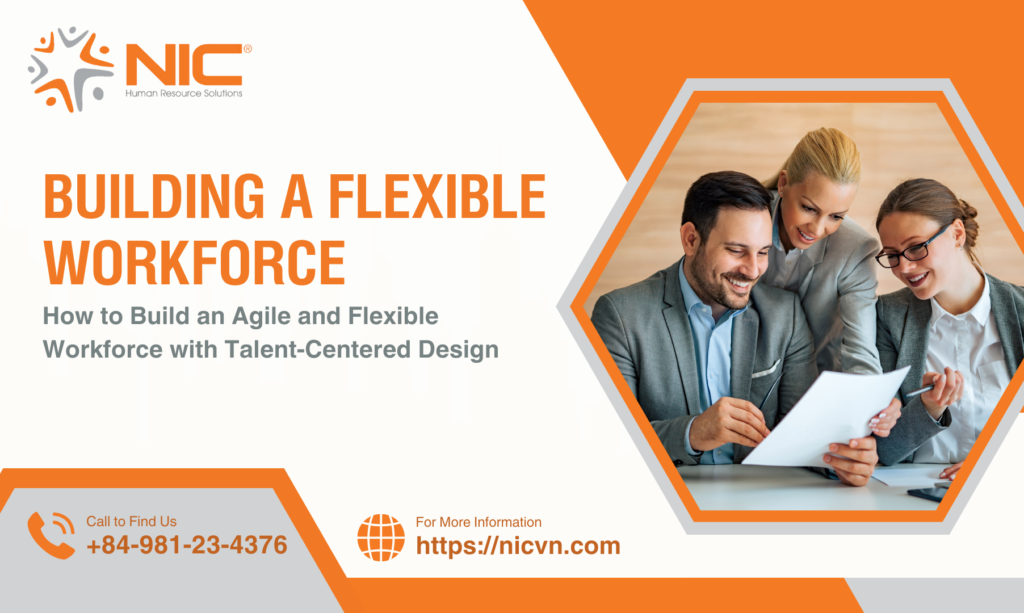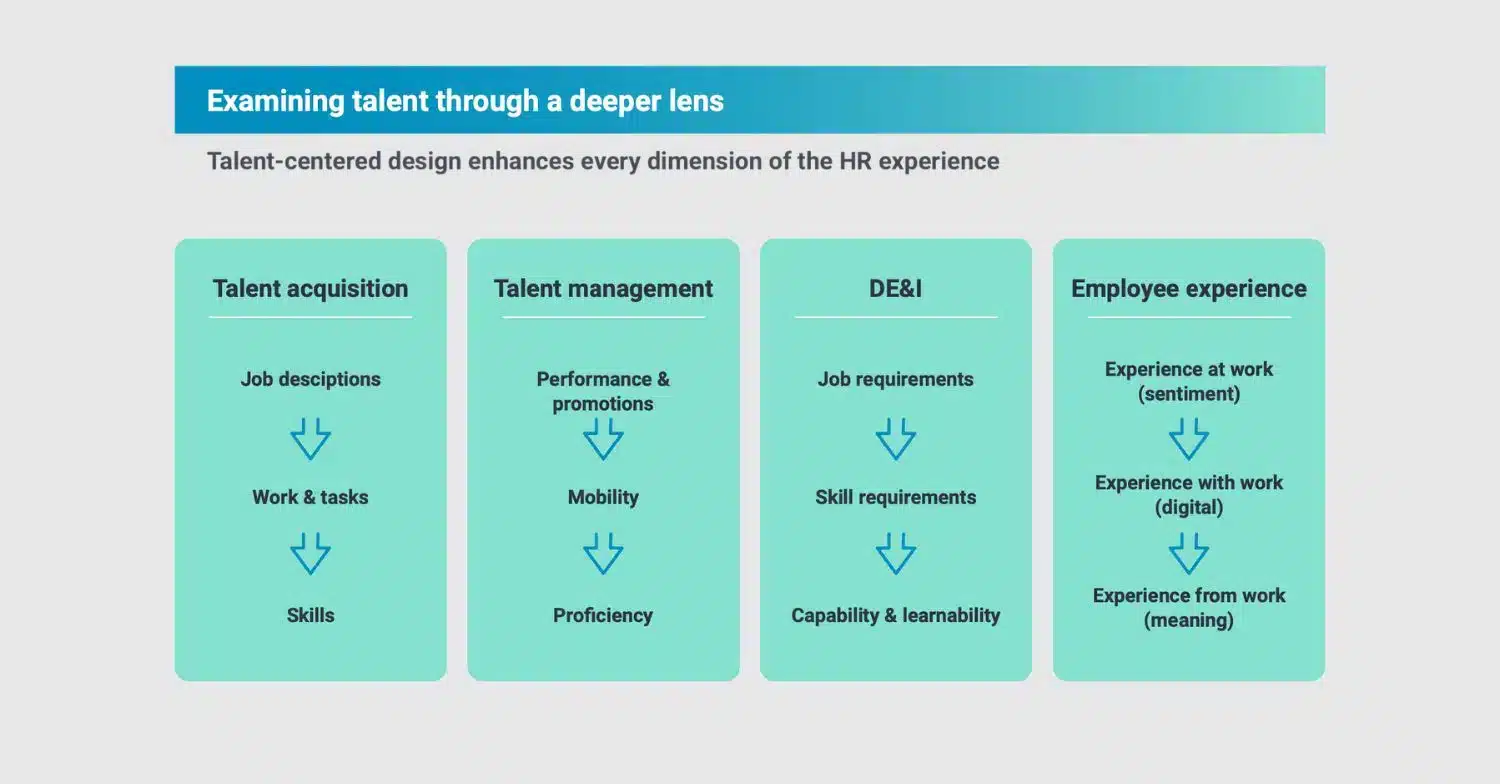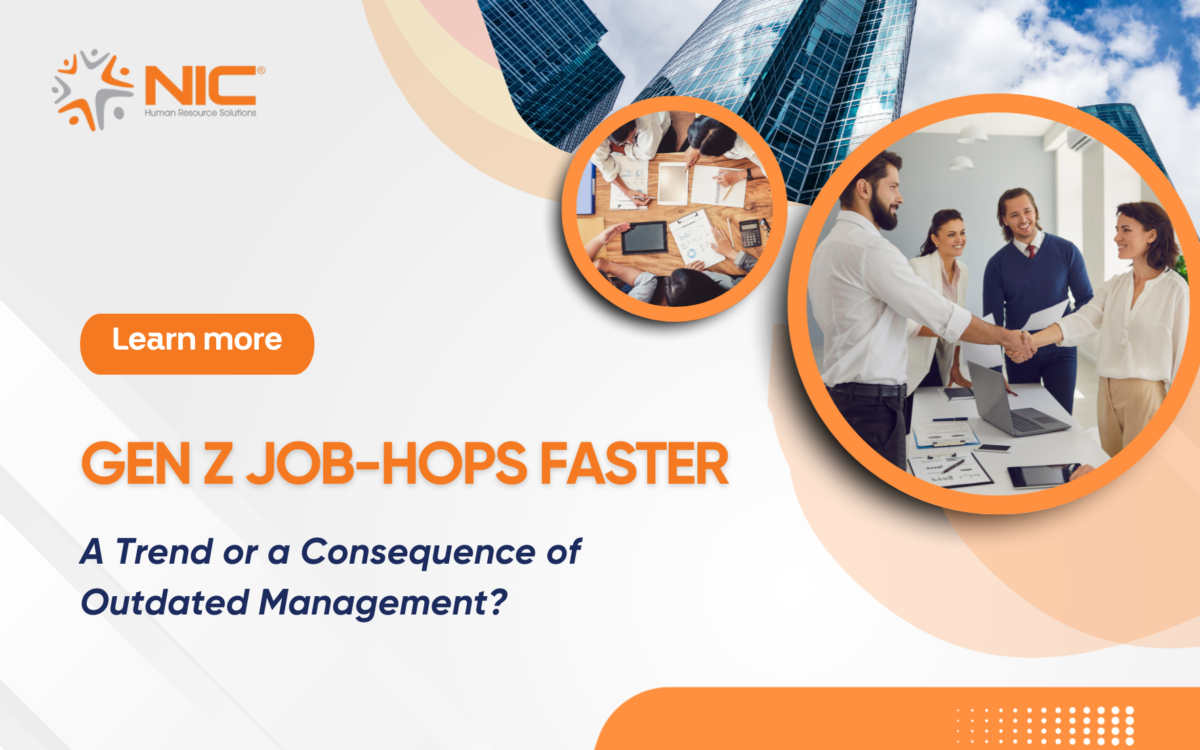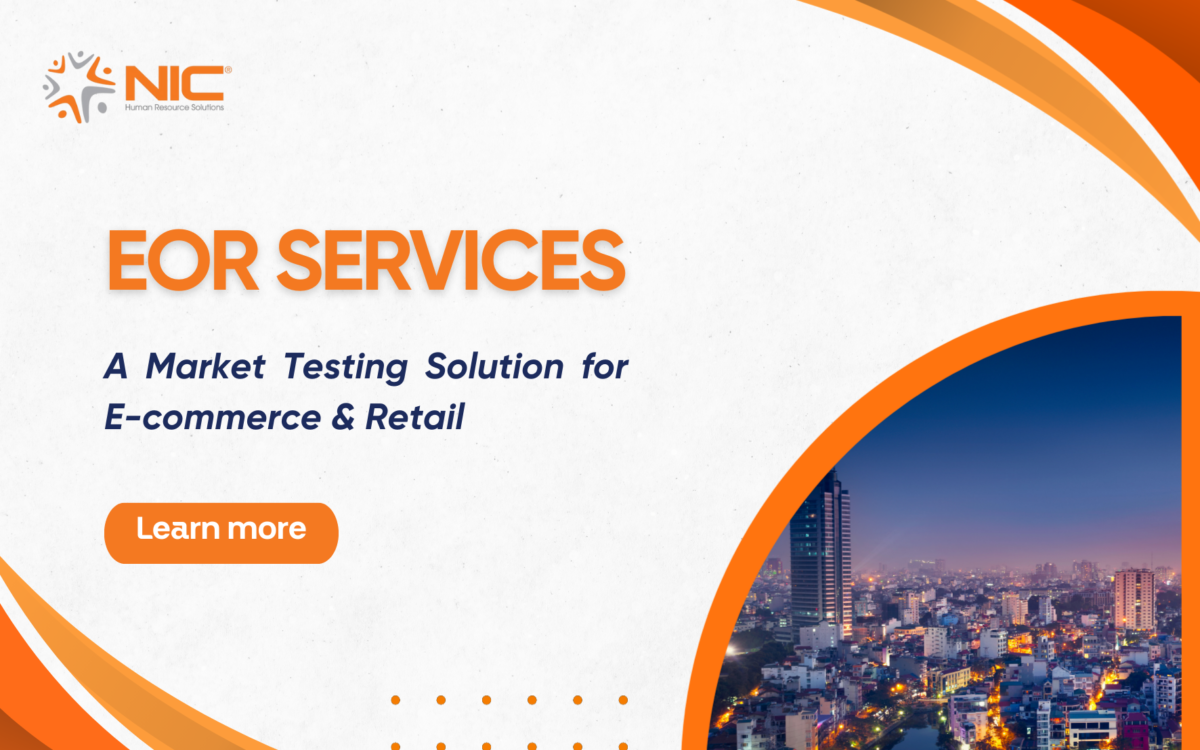How to Build an Agile and Flexible Workforce with Talent-Centered Design
23/10/2024
In the race to stay ahead, companies often focus on the latest technologies or cutting-edge processes. But what if the real key to agility and success lies not in the tools you use, but in the people who use them?
Talent-centered design shifts the focus from roles to skills, from jobs to potential, allowing your workforce to adapt, innovate, and excel in a constantly changing landscape.
Dive into this new approach to workforce planning and discover how to turn your employees into your greatest competitive advantage.

What is Talent-Centered Design?
Talent-centered design puts the individual at the heart of every workforce decision. Unlike traditional models that focus heavily on job titles and descriptions, this approach dives deeper into the skills and potential of each employee. It’s about understanding who your people are, what they’re capable of, and how their unique talents can best serve your organization’s goals.
This shift from a job-centered to a talent-centered approach transforms the way we think about recruitment, development, and retention. It’s not just about filling roles—it’s about creating a dynamic, responsive workforce that can adapt to change and seize new opportunities.
Why an Agile Workforce is Essential
The pace of change in technology, business models, and market dynamics has never been faster. This brings unprecedented uncertainty but also enormous opportunity. Organizations that can pivot quickly, reallocate resources, and adapt to new challenges will be the ones that thrive.
An agile workforce is key to this adaptability. By focusing on the skills and capabilities of your employees, you can ensure that your organization is always ready to meet the next challenge head-on. This means not just having the right people in the right roles, but also giving them the tools and support they need to continuously develop and grow.
The Four Pillars of Talent-Centered Design
1. Talent Acquisition
Traditionally, talent acquisition has been about matching candidates to job descriptions. But in today’s fast-paced world, this approach is no longer sufficient. A talent-centered design approach revamps job descriptions to reflect the current and future needs of the business. This means hiring not just for the tasks at hand, but for the skills that will drive your organization forward.
2. Talent Management
Effective talent management is no longer just about performance reviews and promotions. It’s about understanding the full spectrum of an employee’s skills and how they can be applied across different areas of the business. By leveraging AI and other advanced tools, HR leaders can gain insights into skill proficiency and mobility, enabling a more dynamic and personalized approach to career development.

3. Diversity, Equity, and Inclusion (DE&I)
DE&I efforts are essential for building a truly inclusive workplace. Talent-centered design intersects with DE&I by focusing on skills rather than just traditional job requirements. This approach can help to identify and eliminate unnecessary barriers to inclusion, broadening the talent pool and ensuring that all employees have the opportunity to succeed.
4. Employee Experience
An engaged workforce is a productive workforce. By focusing on the employee experience through the lens of skills and career aspirations, organizations can create more meaningful and fulfilling work environments. This not only improves job satisfaction and retention but also aligns individual goals with organizational objectives, leading to better business outcomes.

Implementing Talent-Centered Design in Your Organization
Transitioning to a talent-centered approach requires more than just a shift in mindset—it requires the right tools and strategies. Here are a few steps to get started:
- Map Out Current Skills: Begin by conducting a comprehensive skills inventory. Understand what skills are currently available within your organization and where there are gaps.
- Align Skills with Business Goals: Once you have a clear understanding of your workforce’s capabilities, align these with your business objectives. This will help you identify where you need to develop new skills or hire new talent.
- Invest in Continuous Learning: Encourage continuous learning and development. Provide opportunities for employees to acquire new skills and stay ahead of industry trends.
- Leverage AI and Data Analytics: Use AI-driven talent platforms to gain real-time insights into your workforce. These tools can help you understand how to best deploy your talent, identify potential skill gaps, and create personalized development plans.
- Foster a Culture of Agility: Finally, foster a culture that values flexibility and adaptability. Encourage employees to take on new challenges and roles, and support them in their efforts to grow and evolve within the organization.
The Path Forward
In today’s competitive landscape, building an agile and flexible workforce isn’t just an option—it’s a necessity. Talent-centered design provides a powerful framework for achieving this goal. By focusing on skills and capabilities, rather than just job titles and descriptions, you can create a workforce that is dynamic, resilient, and ready to meet the challenges of the future.
At NicGlobal, we believe in empowering organizations to unlock the full potential of their talent. Our AI-powered talent intelligence platform is designed to help you understand, engage, and develop your workforce in real-time. Let’s work together to build a future where your people—and your business—can thrive.
For contact and support:
Facebook: NIC Global – Human Resource Solutions
Linkedin: NIC Global Sourcing JSC
Website: www.nicvn.com
Email: info@nicvn.com
Hotline: 0981.23.43.76
Address:
- Hanoi Office: No. 3A Thi Sach, Pham Dinh Ho Ward, Hai Ba Trung District, Hanoi, Vietnam
- Ho Chi Minh City Office: Dakao Center Building, 35 Mac Dinh Chi, District 1, Ho Chi Minh City, Vietnam
See more:
Payroll service
Staffing service
EOR service





